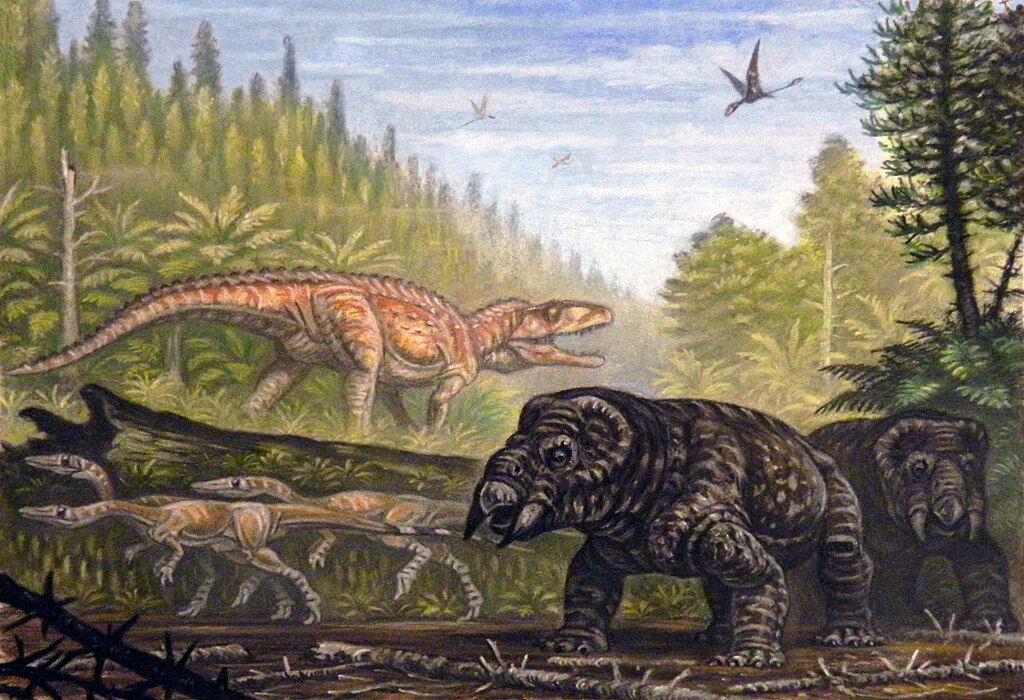When you think of visiting museums, dinosaurs might not be the first thing that pops into your head. Yet there’s something magical about standing face-to-face with creatures that roamed Earth millions of years ago. These prehistoric giants have the power to make grown adults feel like kids again, eyes wide with wonder at the sheer size of an Allosaurus jaw or the imposing stance of a T-Rex. What makes these museum experiences even more thrilling is knowing you’re seeing actual fossils, not just replicas.
The U.S. is home to some of the world’s most incredible dinosaur collections, each with unique specimens that tell fascinating stories of ancient life. From the bustling halls of New York’s American Museum of Natural History to the specialized galleries of Montana’s Museum of the Rockies, these institutions house treasures that scientists have spent decades uncovering. So let’s dive into the world of paleontology and discover ten dinosaurs that will leave you absolutely speechless.
SUE the Tyrannosaurus Rex at Chicago’s Field Museum
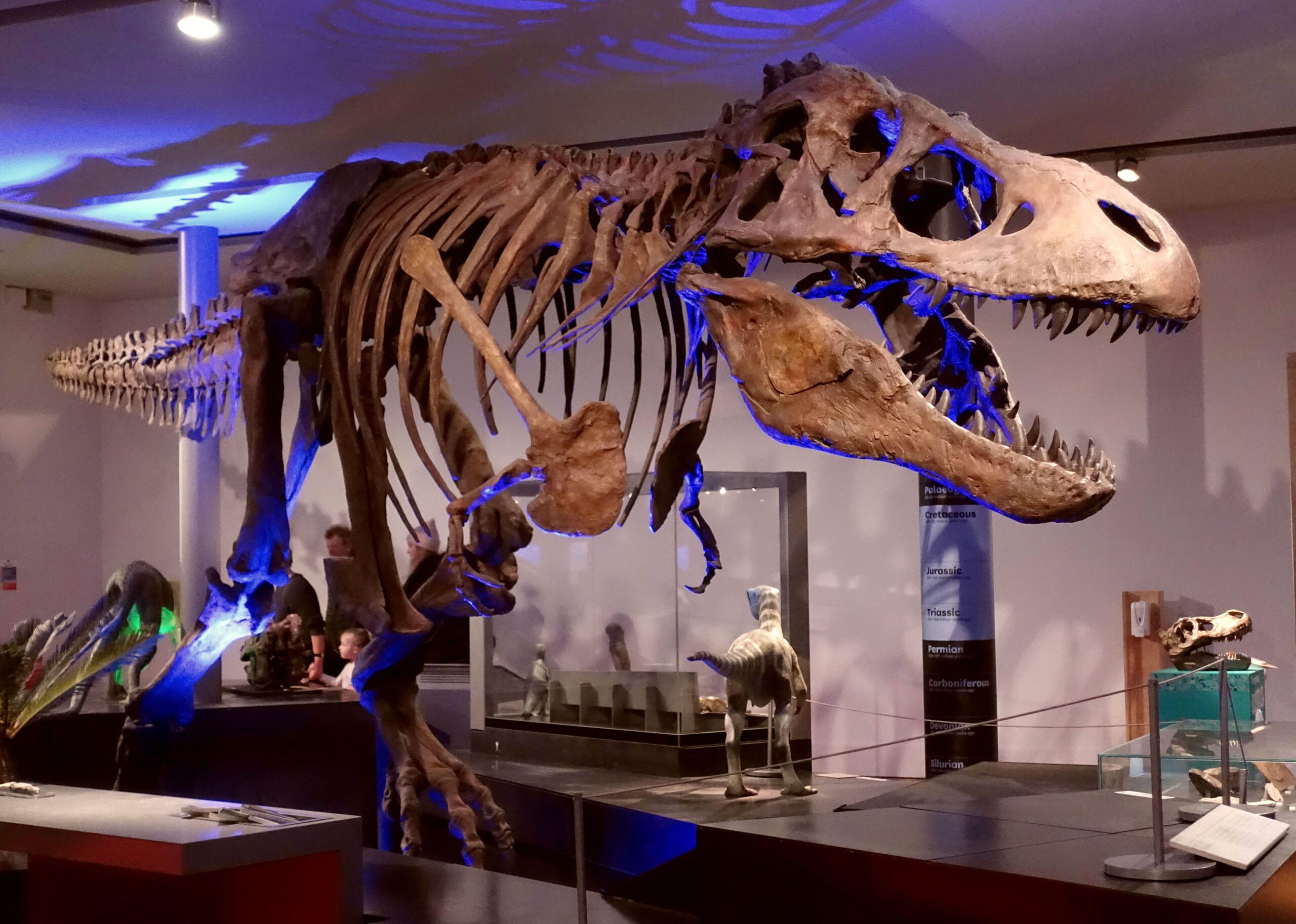
Standing face-to-face with SUE is nothing short of breathtaking. This Tyrannosaurus Rex is one of the largest, most extensive, and best preserved fossils ever found, with over 90 percent recovered by bulk. The story behind SUE’s discovery reads like an adventure novel, complete with legal battles and museum bidding wars.
In October 1997, SUE was auctioned for $8.36 million, at that time the highest price ever paid for a fossil. Today, visitors can find SUE in a dedicated 5,100-square-foot suite within the museum’s Griffin Halls of Evolving Planet. The T. Rex measures 40 feet long and 13 feet tall and weighed nine tons when it was alive some 67 million years ago.
The Titanosaur at New York’s American Museum of Natural History
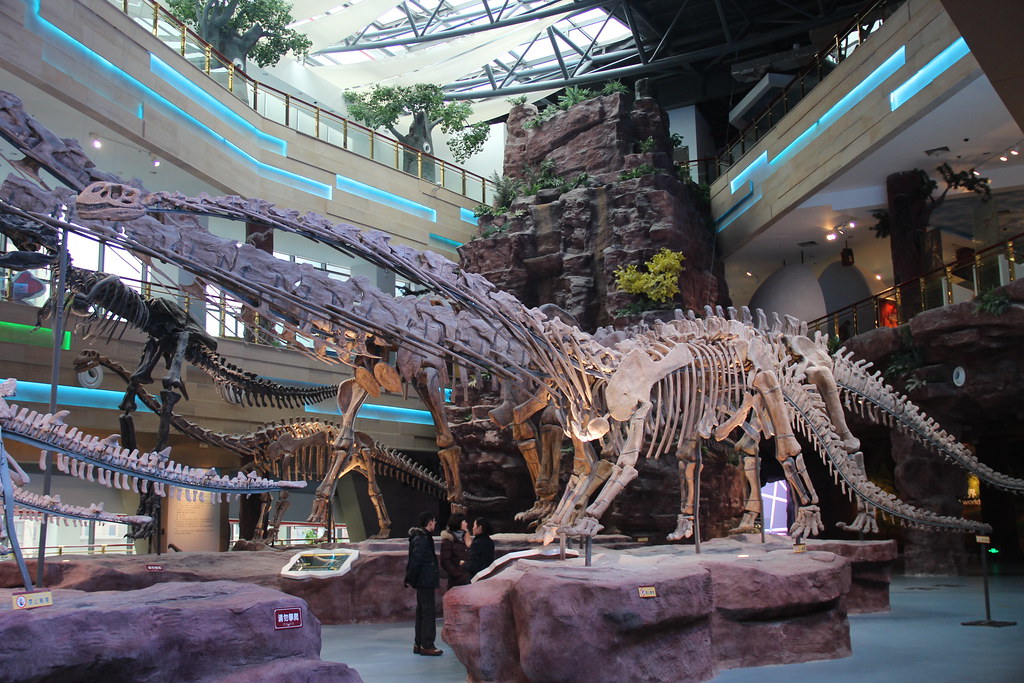
Step into the American Museum of Natural History and prepare to have your mind blown by sheer size. The Titanosaur grazes the Wallach Orientation Center’s approximately 19-foot-high ceilings, and at 122 feet, is just a bit too long for its new home. Instead, its neck and head extend out towards the elevator banks, welcoming visitors to the “dinosaur” floor.
This is a life-sized cast of a 122-foot-long sauropod dinosaur Patagotitan mayorum discovered in 2014. The museum’s dinosaur exhibits are organized to reflect evolutionary relationships, making your journey through the halls feel like walking along branches of the evolutionary tree. The museum displays 600 fossil specimens including more than 250 mammal fossil specimens and approximately 100 dinosaur fossil specimens. Eighty-five percent of specimens are actual fossils, as opposed to casts or reproductions.
Big Al the Allosaurus at Montana’s Museum of the Rockies
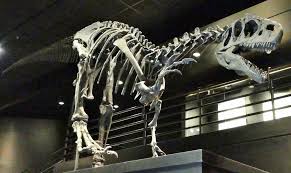
Enter the Jurassic Period and encounter ‘Big Al’, one of the most complete Allosaurus ever discovered. This Jurassic carnivore’s skeleton records evidence of a hard life, including injuries and infections. What makes Big Al particularly fascinating isn’t just his completeness, but the story his bones tell about survival in the ancient world.
The Museum of the Rockies recently unveiled a new primary paleontology exhibition in July 2024, giving Big Al and his fellow dinosaurs a fresh presentation. The exhibit is comprised of real fossil material, 3D prints, casting, reproductions, murals, new paleo-art, AV interactives, an augmented reality piece, microscope stations, discovery drawers, and more. Visitors can also observe fossil preparators at work in the Bowman Dinosaur Viewing Lab.
Triceratops at Washington D.C.’s Smithsonian National Museum
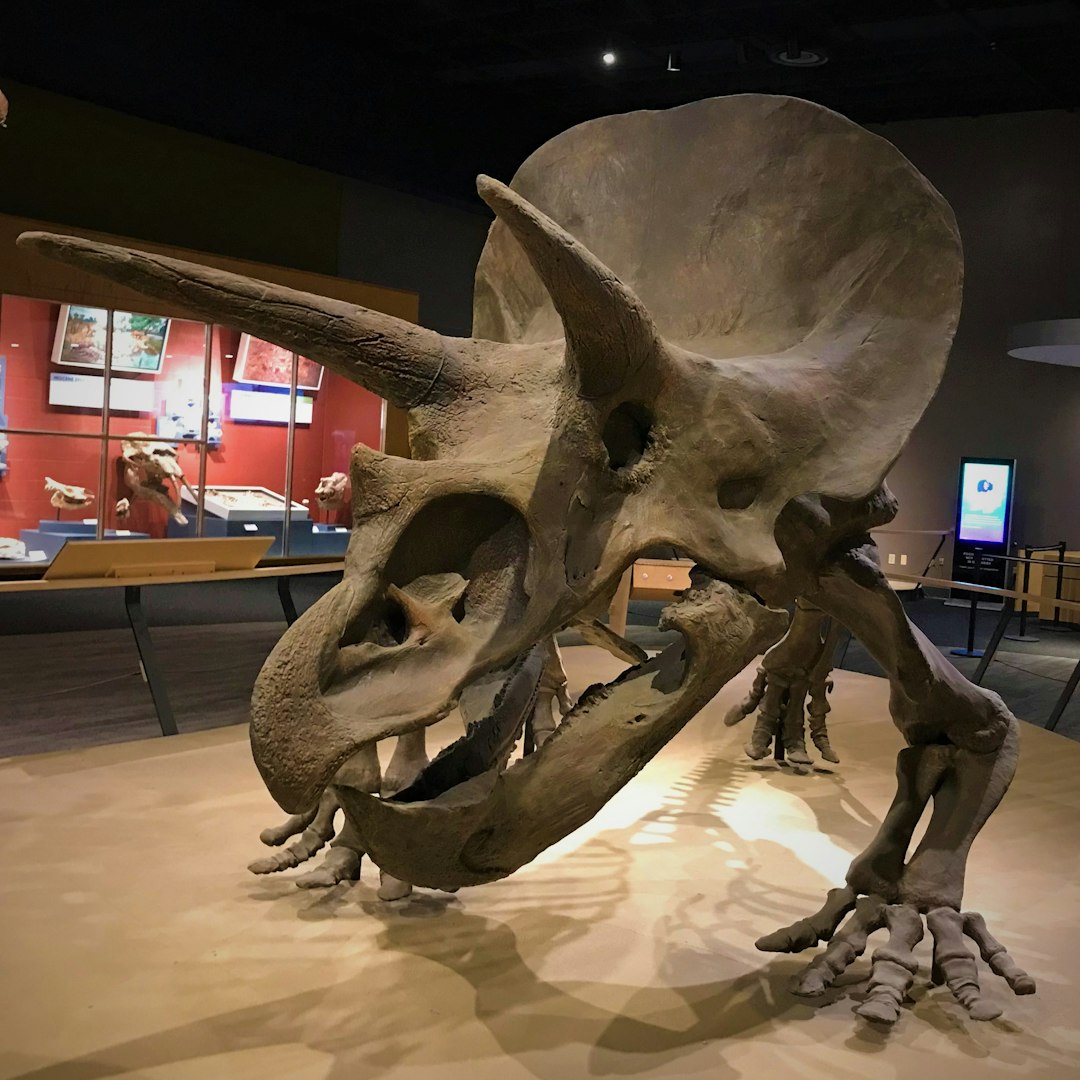
This 65-million-year-old Triceratops has a large frill on the back of its skull, and two large horns over its eyes. The Smithsonian’s approach to displaying dinosaurs creates an immersive experience that connects visitors to Earth’s deep past. Deep Time features roughly 700 fossil specimens, many never displayed before. Aside from the previously mentioned T. Rex and the American mastodon, you can gaze at a woolly mammoth, a giant deer from 15,200-11,100 years ago, a giant sloth and the brontothere mammal.
Discovered in Montana in 1988, this is one of the world’s most complete T-Rex fossils, and it’s the centerpiece of the new David H. Koch Hall of Fossils at the Smithsonian’s National Museum of Natural History in Washington, D.C. It’s just one of more than 700 artifacts on display in the newly completed hall. The museum’s Deep Time exhibit tells the story of how life has evolved over billions of years.
Stegosaurus at the American Museum of Natural History
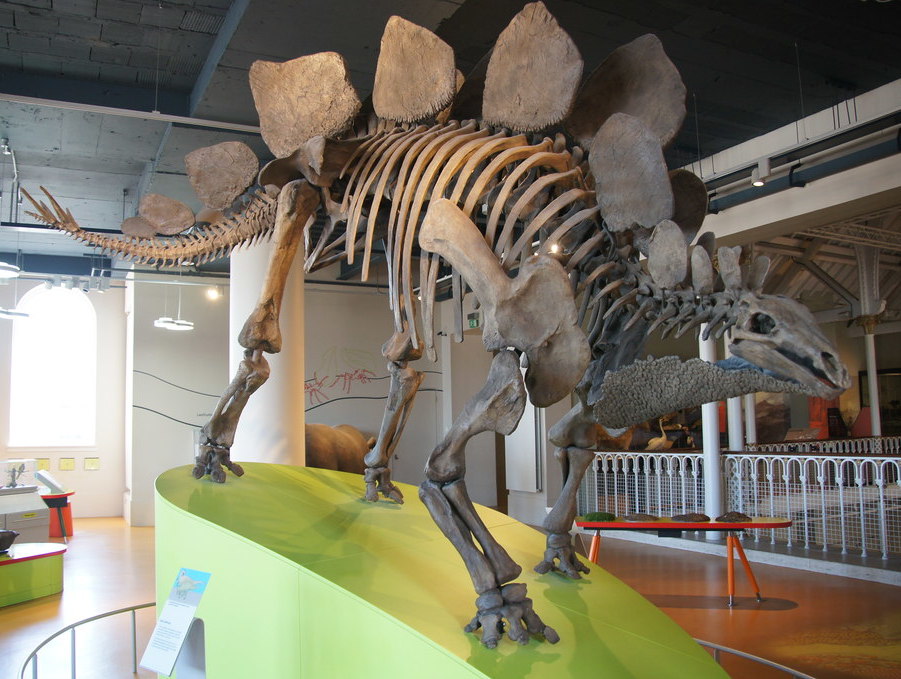
At one time, some scientists thought Stegosaurus had a second brain because the one in its head seemed so small. This iconic dinosaur with its distinctive back plates and spiked tail captures imaginations like few others. The American Museum’s Hall of Ornithischian Dinosaurs provides the perfect setting to appreciate the unique features that made Stegosaurus one of the most recognizable dinosaurs.
Walking through the museum’s evolutionary pathway, visitors encounter the Stegosaurus alongside other plant-eating dinosaurs that showcase the incredible diversity of herbivorous species. The careful organization of exhibits helps visitors understand how different dinosaur groups developed unique adaptations for survival. The ornithischians were an extremely diverse group of plant-eating sauropsids (reptiles).
Supersaurus “Jimbo” at Wyoming Dinosaur Center
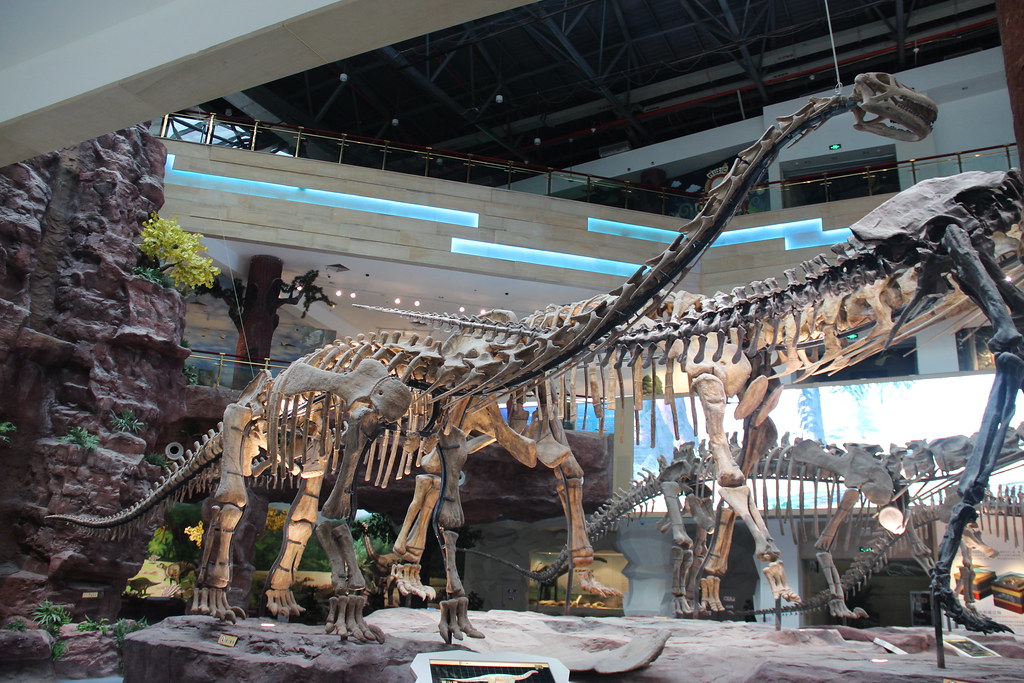
Over 30 mounted dinosaur skeletons can be seen in the main exhibit hall, one in particular stands out: “Jimbo”, a 106-foot Supersaurus that dominates the space. Jimbo is one of the largest mounted skeletons in the world, and it is a lesson in humility to stand next to him. The Wyoming Dinosaur Center may not have the fame of larger institutions, but it packs an incredible punch with its impressive collection.
The museum also boasts the only North American exhibit of a fossilized Archaeopteryx, one of the most famous prehistoric creatures since its discovery in the 1860’s. This rare specimen represents a crucial link between dinosaurs and modern birds, making the Wyoming Dinosaur Center a must-visit destination for serious dinosaur enthusiasts who want to see something truly unique.
Carnotaurus at Los Angeles County Museum
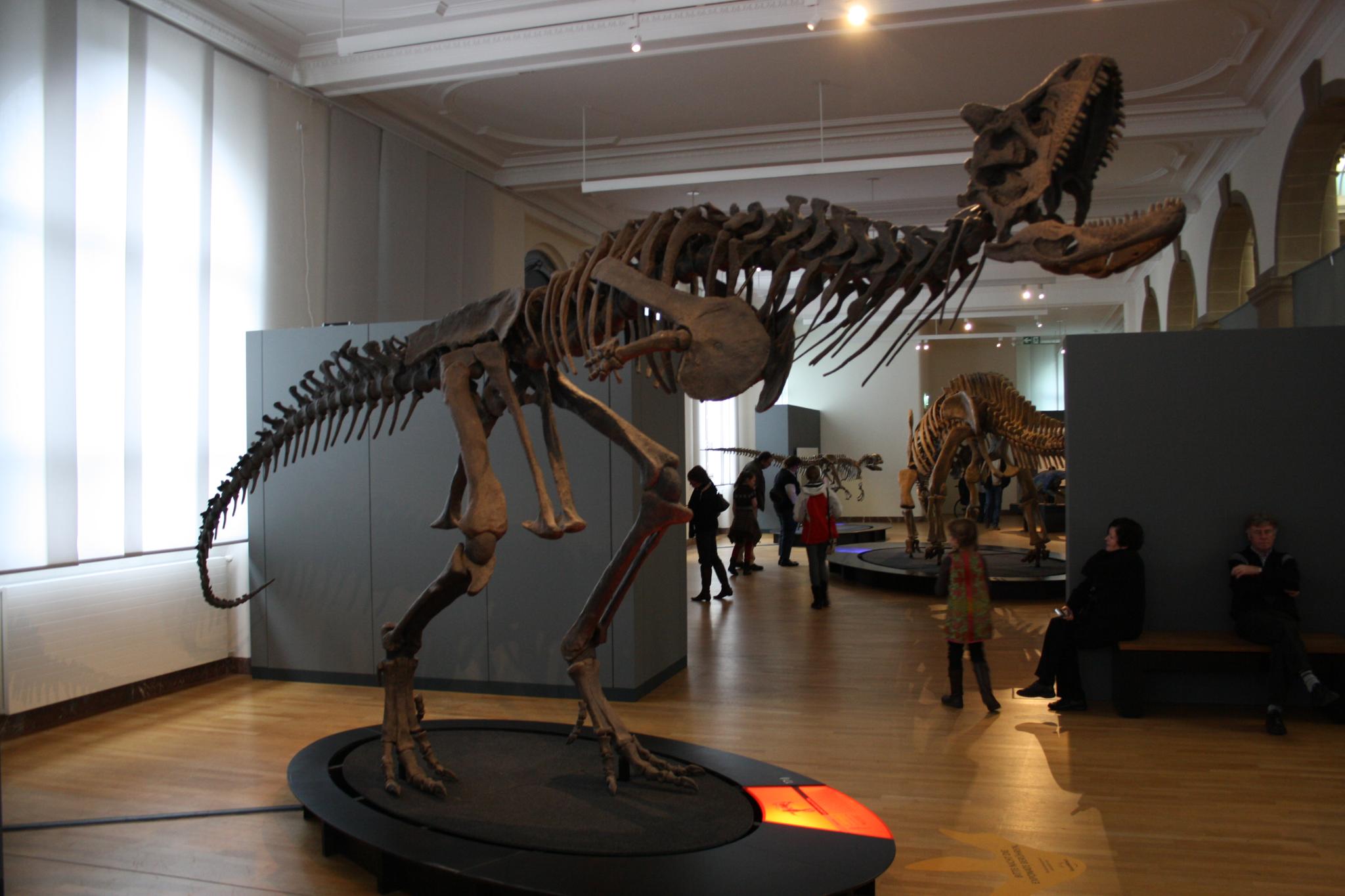
The Natural History Museum of Los Angeles County’s Dinosaur Hall is one of the most extraordinary dinosaur exhibits in the world, and a premier dinosaur experience in the western United States. Inside are more than 300 real fossils and 20 complete dinosaurs and even a T. rex trio – three T. rexes at various stages of maturity.
The Dinosaur Hall is packed with over 300 fossils and 20 full dinosaur skeletons, including Mamenchisaurus, Carnotaurus, and Velociraptor. The museum also features Dinosaur Encounters, a live show with life-sized dinosaur puppets that move, roar, and interact with the audience. The Carnotaurus, with its distinctive horned skull, represents one of the most unusual predatory dinosaurs ever discovered in South America.
Deinonychus at the American Museum of Natural History
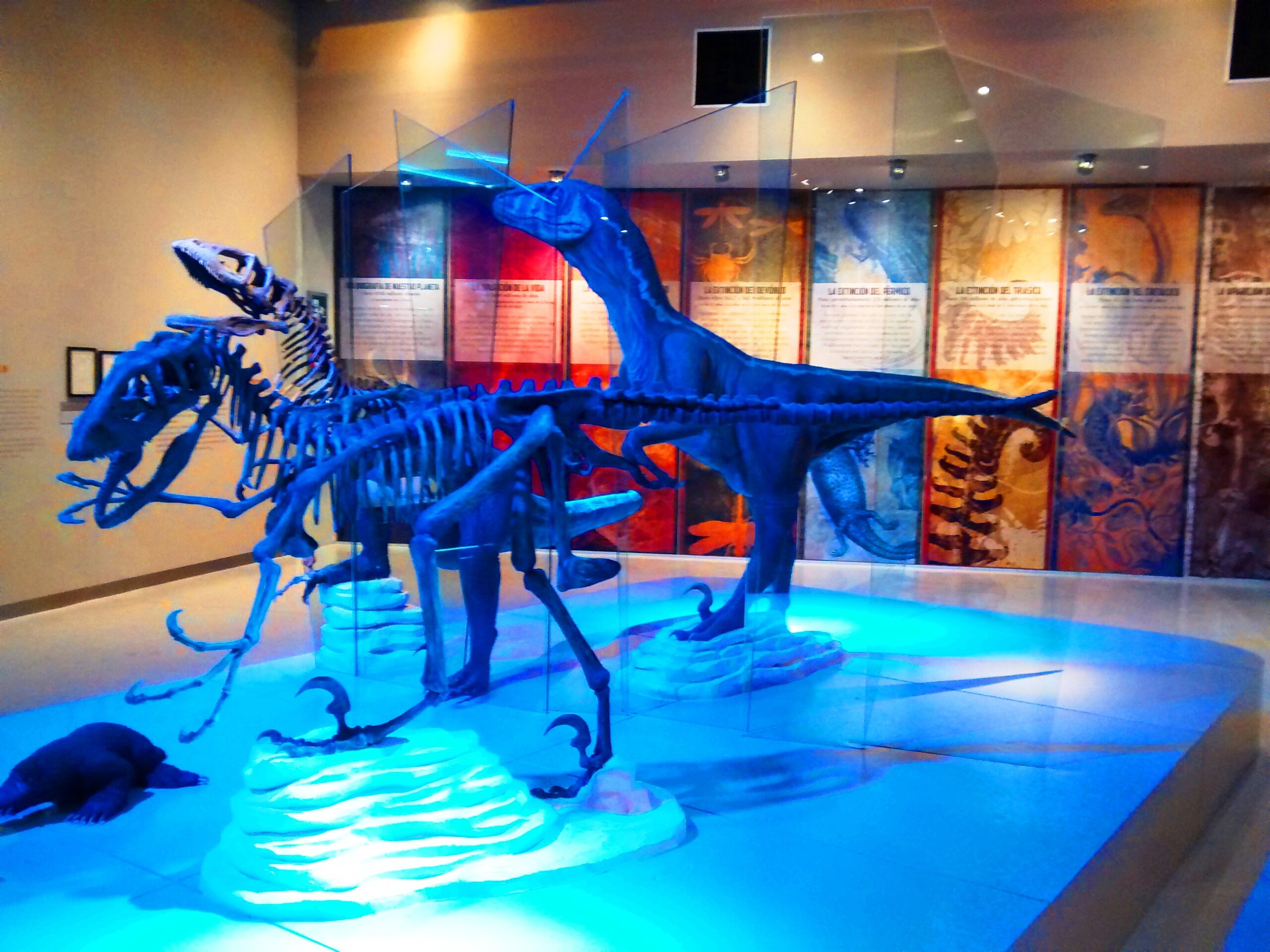
At 7 feet long, Deinonychus belonged to a group of dinosaurs called maniraptors, or “hand-robbers.” This relatively small but fierce predator revolutionized our understanding of dinosaur behavior and intelligence. The discovery of Deinonychus played a crucial role in changing how scientists viewed dinosaurs, from sluggish reptiles to active, intelligent creatures.
The specimen’s distinctive sickle-shaped claws and compact build tell a story of precision hunting that would have made this dinosaur a formidable opponent despite its smaller size. Visitors often spend considerable time studying the bone structure that reveals how Deinonychus used its famous killing claw. The museum’s presentation helps visitors understand how this dinosaur’s anatomy perfectly suited its predatory lifestyle.
Diplodocus at the Smithsonian’s Deep Time Exhibit
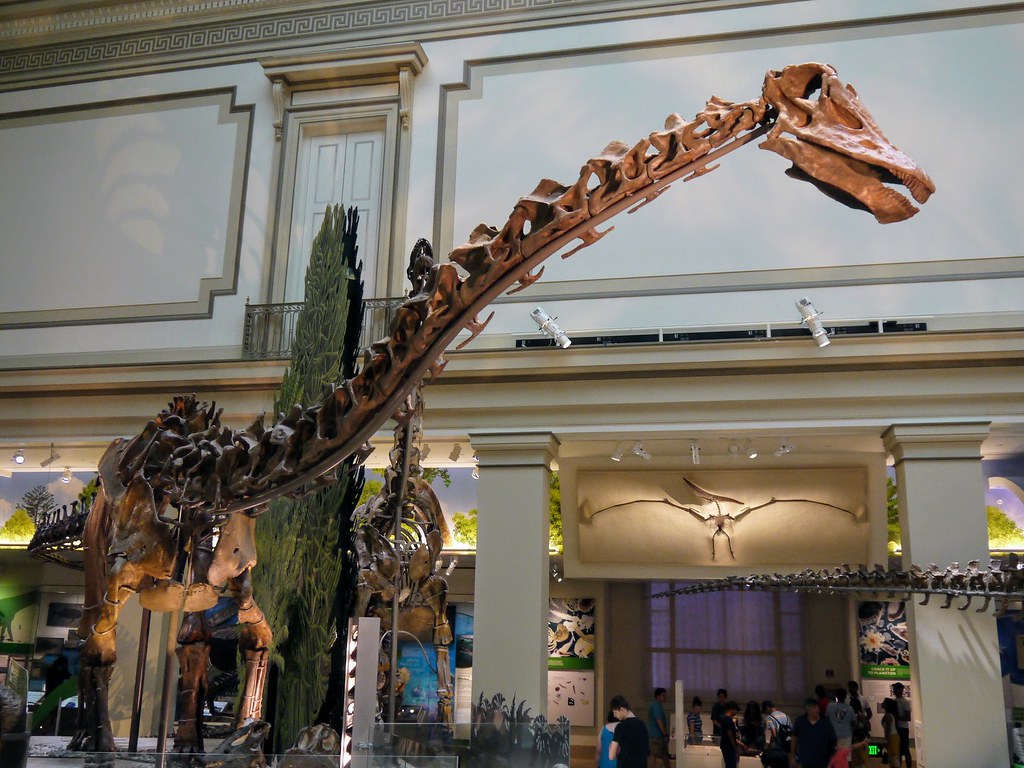
Along the way, visitors will travel through ancient ecosystems, experience the evolution of plant and animal life, and get up close with some 700 specimens, including an Alaskan palm tree, early insects, reptiles and mammals, and dramatically posed giants like Tyrannosaurus rex, Diplodocus and the woolly mammoth. The Diplodocus represents the classic long-necked sauropod that many people envision when they think of dinosaurs.
What makes the Smithsonian’s Diplodocus special is its presentation within the broader context of Earth’s history. Throughout its expanse, Deep Time reflects themes of connection, evolution, extinction and climate change. The experience encapsulates billions of years of science, summarizing numerous time periods through impressive fossil specimens, informative text, dioramas, murals, videos, interactive touchscreens and touchable objects. This approach helps visitors understand how Diplodocus fit into ancient ecosystems.
Allosaurus at the American Museum of Natural History
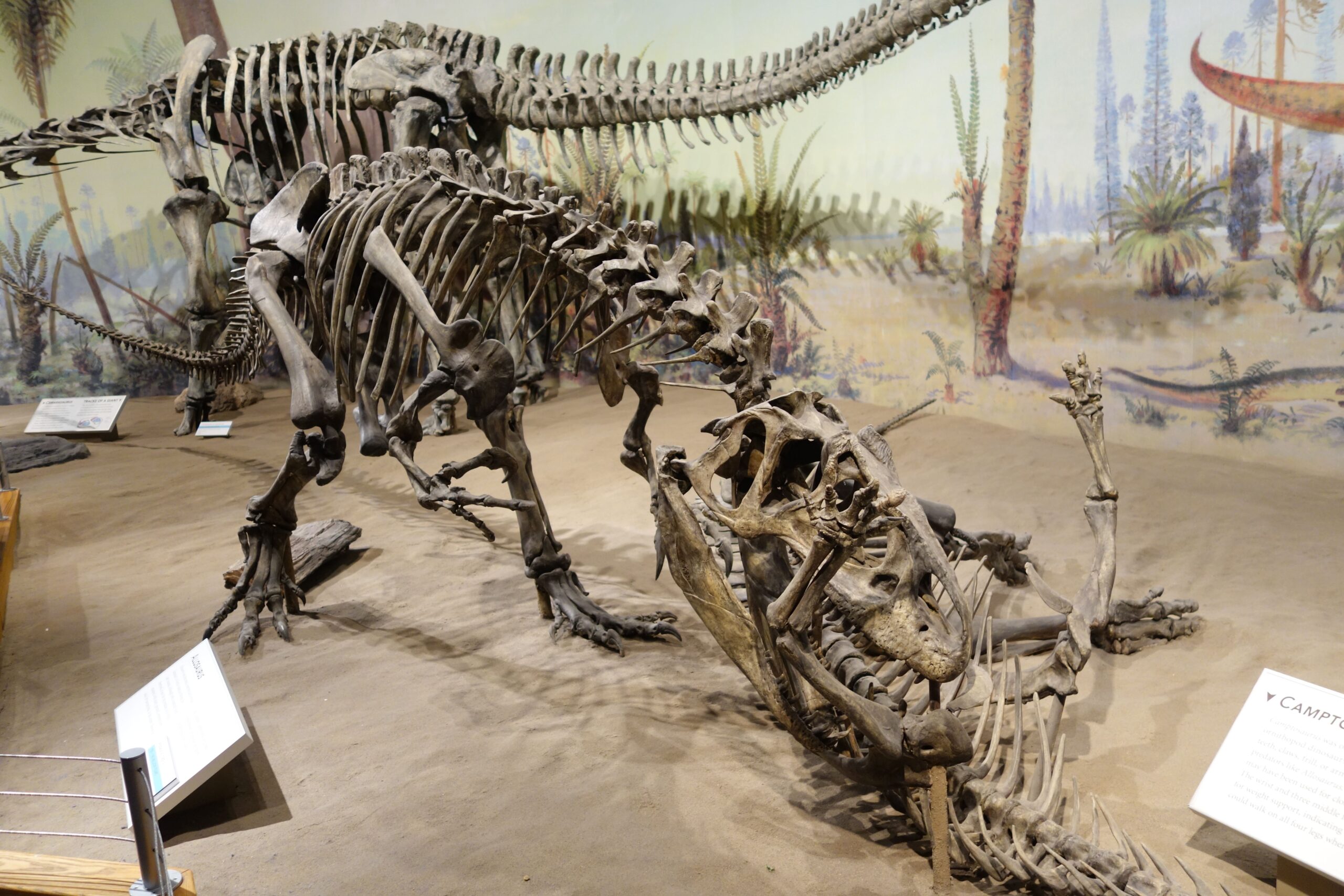
Allosaurus is shown feeding on a carcass with bones marked by grooves. This dramatic presentation brings the predatory nature of Allosaurus to life in a way that static skeletons simply cannot match. The museum’s decision to show this dinosaur in an active feeding pose helps visitors understand the reality of prehistoric life.
The American Museum’s Allosaurus specimen demonstrates the institution’s commitment to scientific accuracy combined with engaging presentation. Inside, the museum’s fossil halls hold dozens of complete skeletons, including T. rex, Allosaurus, and Protoceratops. The careful attention to detail in the presentation allows visitors to appreciate both the dinosaur’s fearsome reputation and its important role in Jurassic ecosystems as one of the dominant predators of its time.
Conclusion
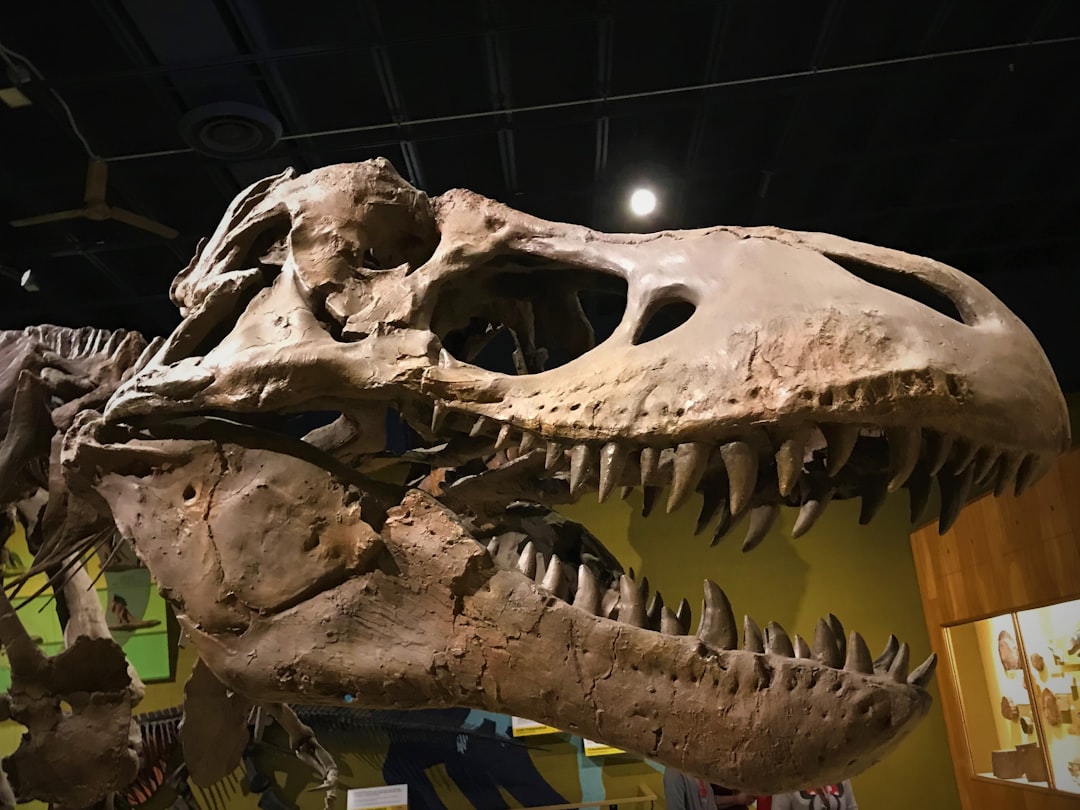
These ten dinosaurs represent just a fraction of the incredible specimens waiting to be discovered in America’s museums. Each fossil tells a unique story about life on Earth millions of years ago, from the massive plant-eaters that shook the ground with every step to the cunning predators that stalked ancient forests. What makes these museum visits truly special is the combination of scientific accuracy and pure wonder that comes from standing next to these ancient giants.
Whether you’re planning a family vacation or simply looking for an educational adventure, these museums offer experiences that will stay with you long after you leave. The next time you find yourself near any of these institutions, take the opportunity to step back in deep time and meet some of Earth’s most magnificent former residents. What do you think about these incredible prehistoric creatures? Tell us in the comments.


